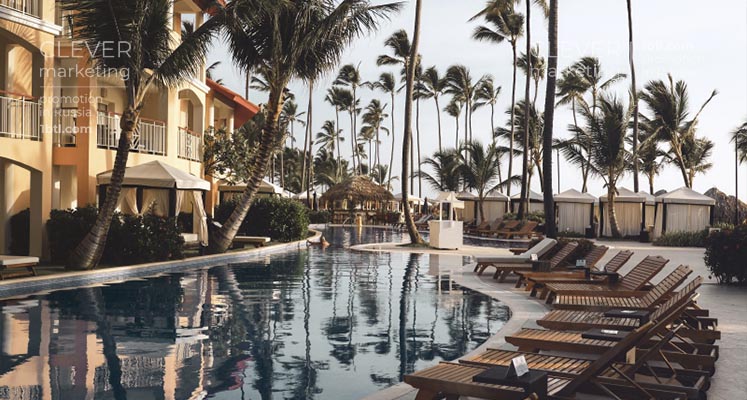Premium product market in Russia
Economic crisis due to the coronavirus pandemic affected the business in Russia. But today the market is coming back to life. The revival is modest, but noticeable, and it will continue to grow. Moreover, 85% of experts expect the luxury market to grow in the next three years.
In Russia, as nowhere else, the premium class is such a specific category that this very concept is interpreted somewhat differently here than in Europe, where it came from. Why?
Firstly, the historical development of our country, which has been behind the “Iron Curtain” for a long time, played a big role. Secondly, the mentality of the Russian person forms a kind of perception of the premium class.
Despite the fact that the level of general well-being of the population is noticeably increasing, in Russia the stratum of well-off people makes up a fairly small percentage of the total population of the country. And those who make up this small percentage are different from rich people in other countries.
What is the luxury market in Russia
When we say “premium”, of course, we mean success, well-being, quality. Taking into account this connotation, a program for promoting premium brands is being formed. But for the Russian consumer, such an aspect as the recognition of premium is also important to emphasize their solvency in a certain environment.
And if the mass market segment is quite simple to model, then everything is different in the premium category. It, in turn, is divided into narrower ones. The affordable segment of the premium class market includes perfumes branded by well-known haute couture companies, alcohol, pret-a-porter clothing. In terms of the use of marketing and commercial promotion models, this segment is similar to the mass market.
But there is still a premium segment of the market that is inaccessible to a wide category of the population — this is exclusive real estate, author’s jewelry, antiques, means of transportation (cars, yachts, air transport, etc.). There is a big difference between these two segments, which in the second case further complicates the promotion of products.
Particularities of promotion of luxury brands
The main difference between the promotion of premium brands is a higher price positioning, which forms a number of specific requirements. It should be borne in mind that often the premium audience makes purchases on the principle of “just to be more expensive”. This is a desire to demonstrate something to yourself and others. However, in addition to the high price, the premium brand should be radically different from others visually and in quality. Just the latter is sometimes forgotten, focusing on packaging, positioning, and pricing policy. The problem of fakes has a negative impact on the brand’s image as a whole. Distrust of the brand is formed, which does not contribute to sales growth at all.
As a result, many people get the impression that the premium class is just a bright outer shell, behind which a low-quality product at a high price is hidden. Companies operating in the premium segment should bear great social responsibility not only for what they sell, but also for educating their consumers to have a culture of taste for really high-quality things. Communication with the end customer should be built taking into account the fact that the premium class is an exclusive product, focused specifically on this client.

If contact is established instantly in the mass segment, you need towait a long time here — “taming” to a new brand is not cheap. In the client’s view, it should become an integral attribute of the” beautiful life”, only then it has every chance of long-term success. In addition, it is important to constantly maintain the novelty, so that there is no move to another brand. As part of this promotion strategy, various social events with VIP guests, private parties for wealthy people, etc. are held.
Customer-oriented business
Today, the main task of premium market players is to keep up with the new unpredictable desires of their end consumers. This is very difficult. An integrated approach, which combines PR, special events, direct advertising, promotions to promote products in retail outlets, is the key to success in this difficult struggle for the consumer. As already mentioned, people who prefer premium goods and services are always changeable in their tastes, so it is necessary to regularly offer them an updated brand philosophy, more vivid emotions. It is important to feel the moment when it is needed, to see a few steps ahead, to speak the same language with your client, to sensitively capture his interests.
I am sure that the premium class market will grow and develop more and more actively. And the point here is not only the general increase in the standard of living of the population, but also what is especially pleasant to note: our public is becoming more educated. It is possible that new, stronger competitors will appear in each premium segment. I am optimistic about this and I am convinced that Russian buyers will form a correct understanding of premium products and services, which will have a positive impact on the quality of the market as a whole.
The Russian premium-class market attracts the attention of domestic and foreign investors. And the key to success is not only the presence of strong brands in the assortment portfolio, but also the competent construction of distribution and connections with the end consumer. If the policy of promoting a strong brand is built correctly, this will allow the company to make large profits.
An important role is also played by the fact that the method of storage of premium products does not differ much from products of other price categories. Accordingly, the relative share of their storage costs is almost the same.
There are relatively few target consumers of premium products; they mainly live in large cities, have a similar lifestyle and consumer preferences. This makes it possible to formulate uniform requirements for the retail trade of these products, allowing you to “clone” retail outlets. Note that the latter circumstance opens the way to the development of franchised forms of retail trade and thus makes it possible to save on the costs associated with its organization.
Premium class problems
Commercial benefits The high commercial attractiveness of the market segment under consideration inevitably entails some problems. For example, the low capacity of the segment in physical terms causes its rapid filling and, as a result, increased competition between sellers. The low number of consumers imposes restrictions on the number of retail trade enterprises necessary to meet the demand in the segment (the same factor determines the low sales volumes in physical terms). In addition, goods should be presented in retail trade in a wide range, which leads to a relatively low capital turnover. The same circumstance, plus high purchase prices for the goods, forces the seller to spend quite large amounts to maintain the assortment.
As for consumers, there are also a number of problems here. The high income, professional and social status of VIP customers determine the increased requirements for the quality, assortment of goods, and methods of packaging it. In addition, the buyer requires a variety of forms and high quality of pre – and after-sales service, as well as information support for the sales process. Do not forget that it should be convenient for the consumer to get to the retail outlet and move around in the trading floor; sometimes an attractive interior design of the store, musical accompaniment of the purchase process and everything that creates a pleasant atmosphere of the institution play an equally important role: sounds, smells, colors, light, furniture, dishes, accessories, accessories, etiquette. Another important aspect is the qualification of sales personnel, the appearance of sellers and the manner of communication with the consumer.

The need to meet the high demands of customers causes high costs for the company’s communication activities, the purpose of which is to establish strong emotional ties with customers and form their loyalty. And since the low dependence of demand on price makes price competition impossible or ineffective, the competition ultimately unfolds in the sphere of establishing and developing close relationships with customers.
The last two circumstances determine the need for the development of branding in this segment, i.e. activities for the development and promotion of brands that are a strategic resource of the company in building long-term relationships with consumers and managing these relationships. If in the mass market there is a struggle for the number of customers, not necessarily aimed at establishing long – term contact with each of them, then in the premium-everything is the opposite. A premium company may have, for example, only two regular customers who bring it the main profit every month. Agree, in the mass segment, such a situation is impossible by definition.
Brand promotion: delicacy first of all
High customer requirements, as well as a variety of forms of promotion of premium products and services determine two possible ways of branding development in this segment. The first is the popularization of the brand itself, the product line. The second option is the branding of a retail trade enterprise or a network of enterprises that provide a range of services of a specialized store (boutique) combined with a club, restaurant or other catering enterprise. Our company has managed to combine these two areas by introducing a network of its own boutiques on the market, branding brands and opening whiskey clubs in business centers.
By the way, the implementation of the latest project is quite a unique phenomenon for the market. This is just an example of how a premium product is “included” in the lifestyle of the people to whom it is addressed.
According to businessmen, whiskey, like no other drink, corresponds to the image of a business person. Whiskey is the choice of a wealthy client who wants to emphasize his success, using only the best things. Therefore, an absolutely logical decision was the opening of whiskey clubs on the territory of the largest business centers of the capital. We are sure that many people will support the project and a high sales result will be achieved in the near future.